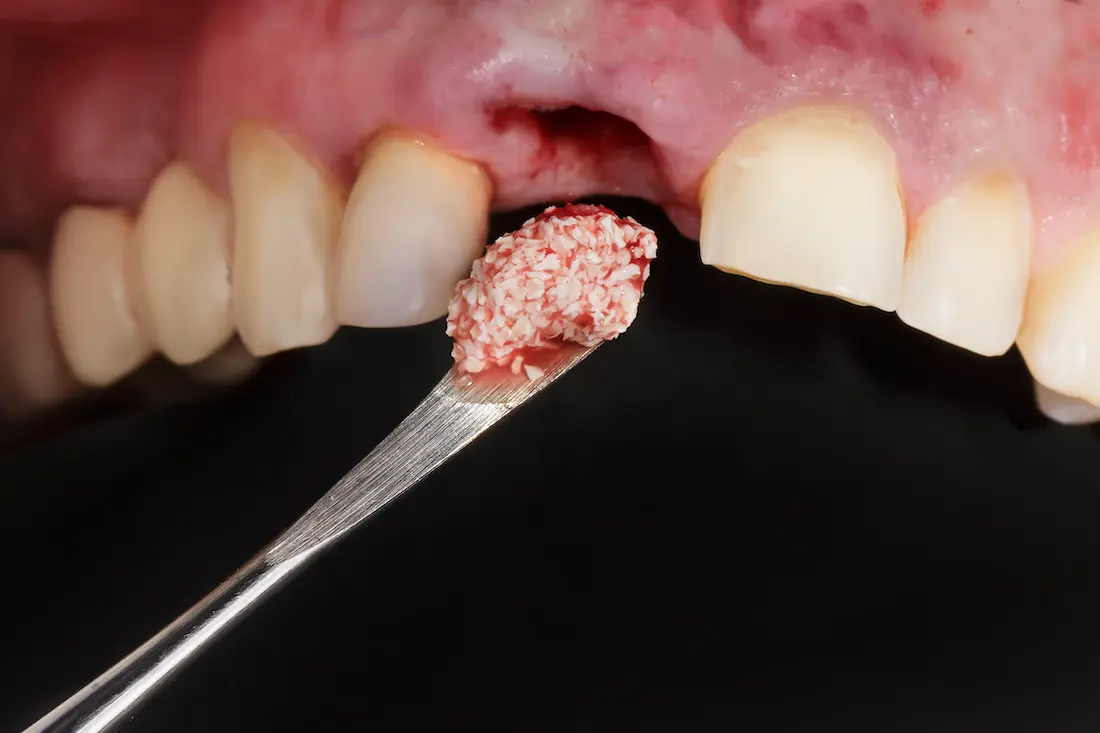Bone Grafting

Bone grafting is a predictable and versatile procedure that can be used to replace lost bone tissue and encourage natural bone growth in the oral cavity. Periodontal disease is the leading cause of oral bone loss, followed by poorly fitting dentures and facial trauma.
A bone graft not only corrects damage to the oral cavity but can halt the progression of gum disease and improve the aesthetic quality of the smile.
There is a wide range of reasons why a dentist might recommend a bone graft procedure to their patients and some of the most common reasons include:
- Dental implants – Missing teeth can be replaced with prosthetic implants but require anchoring in the jawbone. If the jawbone lacks quality or quantity, bone grafting can thicken and strengthen the implant site.
- Ridge augmentation – Trauma, birth defects, injury, and severe periodontal disease can all lead to ridges in the jawbone. Bone grafts fill in these ridges and unify the jawbone’s shape.
- Sinus lift – Bone grafting is used for elevating the sinus membrane to expedite implant placement and improve implant strength.
- Nerve repositioning – If dental implants are blocked by the alveolar nerve, which allows for sensation and feeling in the lower chin and lip, a bone grafting procedure is required to move the alveolar nerve to another location.
Reasons for bone grafting
There are many types of bone grafts a Brooklyn dentist may provide. The most common types are:
- Autogenous bone graft - This graft is completed using bone removed from elsewhere in the body. Common donor sites for bone grafts include the chin, pelvis, and posterior third molar areas of the jaw. The hip or shin bone (tibia) may be used if large amounts of bone must be harvested.
- Allograft - This graft uses synthetic, manmade bone created in a laboratory. Allografts may also use bone obtained from a bone bank, cadaver bone.
- Xenograft - This graft uses bovine bone, the bone from a cow. This is proven to be successful and does not require a secondary donor site. Ample bovine bone can be obtained.
What does bone grafting treatment involve?
Bone grafting procedures in Brooklyn are generally performed under local anesthetic but may require general anesthetic if large amounts of bone need to be grafted.
Before grafting can begin, the grafting material must be harvested and prepared. Then, a small incision will be made in the mouth and the gums will be separated from the bone. The harvested grafting material will then be placed in the affected area.
Regeneration of bone tissue can be aided in many ways:
- Tissue-stimulating proteins - Before the gums are sutured, tissue-stimulating proteins can be applied to the affected area. Enamel matrix proteins, such as Emdogain, occur during natural tooth development and mediate the formation of acellular cementum which anchors the teeth to the gums and creates support in areas affected by periodontal defects.
- Gum/bone tissue regeneration - A membrane can be placed below the gum line over the grafting material that creates a barrier between the fast-growing gum tissue and the slow-growing fibers. This allows bone cells to migrate to the protected area and grow naturally.
- Platelet-rich growth factors - High platelet concentration liquid can be applied to the affected area where it will quickly create a blood clot. This stimulates bone growth and will lead to denser bone growth in a shorter time.
Once the grafting is complete and any regeneration aids are applied, the gums will be sutured back in place. A follow-up visit will be scheduled 10 days later to assess the progress of the graft and how it is healing. Bone grafting is highly successful and provides a good base for additional periodontal treatment and restorations.
If you have any questions about bone grafting, please ask Brooklyn Dental Spa.